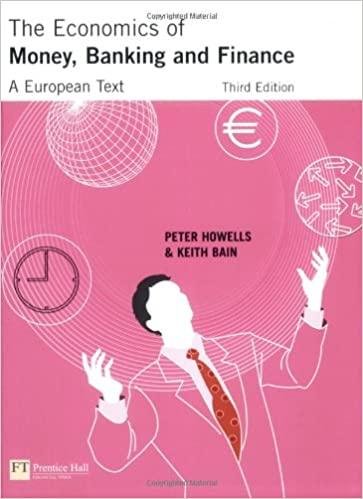

You consider investing in a startup company that is issuing new shares of Common Stock at a price of USD 12 per share. You have collected the following information about the firm: The company needs 2 million today to finance product development and another 5 million in 3 years from now to finance market entry. There is no uncertainty associated with these investments, so they are risk free.. In the first year after market entry (year 4), the firm is expected to generate a free cash flow of 2 million. Thereafter (year 5 onwards), the free cash flow is expected to be constant forever at 5 million. To account for the additional risks of a startup company, you decide to use a hurdle rate of 40% per year for the first 4 years of the expected free cash flows (this hurdle rate already includes any additional risk premium for the lack of tradeability). After year 4, you believe that the company should be sufficiently mature to justify a normal WACC of 10% per year. The risk-free rate of return is 3%. . There are currently 1 million shares of Common Stock outstanding and the firm has no (net) debt. Carefully answer the following questions. Make sure to provide a complete audit trail. a) Do you believe the equity offering is fairly priced at USD 12? b) Suppose a mature company is considering a full acquisition of the startup company. Would such an acquisition make sense if the mature company could buy the startup's shares at USD 12? Assume that the mature firm could earn the exact same expected future cash flows as depicted in the table above. c) You talk to the CFO of the startup company and she complains that your hurdle rate of 40% is excessively high. What analysis would you show her to justify your hurdle rate? Hint: To answer this question, some of the results from (a) and (b) could be helpful. If you have found no answers to questions (a) and (b), assume that the theoretical share price is $10 in (a) and $20 in (b). Note that these are random numbers. Their only purpose is to make sure that students who have found no answer to (a) and (b) can still answer (c)! You consider investing in a startup company that is issuing new shares of Common Stock at a price of USD 12 per share. You have collected the following information about the firm: The company needs 2 million today to finance product development and another 5 million in 3 years from now to finance market entry. There is no uncertainty associated with these investments, so they are risk free.. In the first year after market entry (year 4), the firm is expected to generate a free cash flow of 2 million. Thereafter (year 5 onwards), the free cash flow is expected to be constant forever at 5 million. To account for the additional risks of a startup company, you decide to use a hurdle rate of 40% per year for the first 4 years of the expected free cash flows (this hurdle rate already includes any additional risk premium for the lack of tradeability). After year 4, you believe that the company should be sufficiently mature to justify a normal WACC of 10% per year. The risk-free rate of return is 3%. . There are currently 1 million shares of Common Stock outstanding and the firm has no (net) debt. Carefully answer the following questions. Make sure to provide a complete audit trail. a) Do you believe the equity offering is fairly priced at USD 12? b) Suppose a mature company is considering a full acquisition of the startup company. Would such an acquisition make sense if the mature company could buy the startup's shares at USD 12? Assume that the mature firm could earn the exact same expected future cash flows as depicted in the table above. c) You talk to the CFO of the startup company and she complains that your hurdle rate of 40% is excessively high. What analysis would you show her to justify your hurdle rate? Hint: To answer this question, some of the results from (a) and (b) could be helpful. If you have found no answers to questions (a) and (b), assume that the theoretical share price is $10 in (a) and $20 in (b). Note that these are random numbers. Their only purpose is to make sure that students who have found no answer to (a) and (b) can still answer (c)








